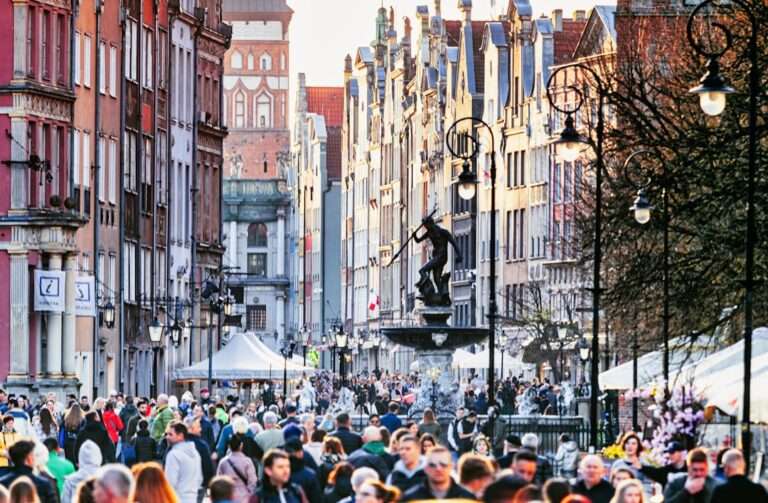What does the Tree of Life symbolize in Middle Eastern traditions?

The Tree of Life is a significant symbol found in numerous cultures and traditions worldwide. In Middle Eastern contexts, it represents the interconnectedness of all living things, the cycle of life and death, and the divine origin of creation. This symbol appears in various forms of art, literature, and religious texts, continuing to inspire and provoke thought among people in the Middle East and other regions.
Typically depicted as a large tree with deep roots and expansive branches, the Tree of Life symbolizes balance and harmony between the physical and spiritual worlds. The roots represent grounding and stability, while the branches signify growth and expansion. This symbol is also associated with immortality, as it is believed to possess regenerative properties and the ability to endure through time.
Various Middle Eastern cultures have adopted the Tree of Life symbol, each contributing their own interpretations and meanings to its complex symbolism. This has resulted in a rich and diverse tapestry of cultural significance surrounding the Tree of Life in Middle Eastern traditions.
Key Takeaways
- The Tree of Life is a powerful and enduring symbol found in various cultures and traditions around the world.
- In Middle Eastern traditions, the Tree of Life holds historical significance and is often associated with creation, knowledge, and immortality.
- The Tree of Life is interpreted in religious and spiritual contexts as a symbol of connection between the earthly and divine realms, and as a representation of growth and renewal.
- Middle Eastern art and literature often depict the Tree of Life as a central motif, symbolizing fertility, abundance, and the interconnectedness of all living beings.
- In Middle Eastern mythology and folklore, the Tree of Life is often linked to stories of creation, wisdom, and the cycle of life and death.
- Today, the Tree of Life continues to be used and interpreted in modern Middle Eastern societies, representing resilience, interconnectedness, and the enduring legacy of ancient traditions.
- The enduring significance of the Tree of Life in Middle Eastern traditions reflects its timeless symbolism and its ability to resonate with people across different cultures and time periods.
Historical significance of the Tree of Life in Middle Eastern traditions
The Mesopotamian Origins
In Sumerian mythology, the Tree of Life was known as the “Huluppu” tree, which was planted by the goddess Inanna in her sacred garden. This tree was later felled by the demoness Lilith, but was eventually restored by the hero Gilgamesh. The story of the Huluppu tree reflects the ancient Mesopotamian belief in the cyclical nature of life, death, and rebirth, and the enduring power of the natural world.
The Egyptian Connection
In ancient Egyptian mythology, the Tree of Life was associated with the goddess Isis, who was often depicted with a sycamore tree, symbolizing her role as a nurturing and protective mother figure. The ancient Egyptians believed that the Tree of Life provided sustenance and shelter for the souls of the deceased in the afterlife, and it was often depicted in funerary art and tomb paintings as a source of eternal life and regeneration.
A Symbol of Vitality and Renewal
The Tree of Life also held significance in ancient Persian traditions, where it was associated with the sacred Haoma plant, which was believed to possess healing and rejuvenating properties. These historical connections demonstrate the enduring significance of the Tree of Life in Middle Eastern traditions, where it has been revered as a symbol of vitality, renewal, and spiritual interconnectedness.
Religious and spiritual interpretations of the Tree of Life

In Middle Eastern religious and spiritual traditions, the Tree of Life holds profound symbolic meaning, representing the divine source of creation and the interconnectedness of all living beings. In Judaism, the Tree of Life is mentioned in the Book of Genesis as a symbol of spiritual nourishment and eternal life. It is believed to have stood in the Garden of Eden, where Adam and Eve partook of its fruit, gaining knowledge of good and evil.
The Tree of Life is also depicted in the Kabbalah, where it is seen as a mystical symbol representing the interconnectedness of all aspects of existence. In Christianity, the Tree of Life is associated with the cross on which Jesus Christ was crucified, symbolizing his sacrifice for humanity’s salvation. The image of the Tree of Life is also found in Christian art and iconography, representing spiritual growth, redemption, and eternal life.
In Islam, the Tree of Life is mentioned in the Quran as a symbol of paradise, where believers will find shade and sustenance in the afterlife. The Quran also describes the Tree of Life as a source of healing and nourishment for those who enter paradise. These religious interpretations reflect the deep spiritual significance of the Tree of Life in Middle Eastern traditions, where it is revered as a symbol of divine grace, spiritual nourishment, and eternal renewal.
Cultural representations of the Tree of Life in Middle Eastern art and literature
The Tree of Life has been a recurring motif in Middle Eastern art and literature for centuries, serving as a powerful symbol of vitality, interconnectedness, and spiritual growth. In Islamic art and architecture, the Tree of Life is often depicted in intricate geometric patterns and arabesque designs, symbolizing the interconnectedness of all creation and the divine order of the universe. The image of the Tree of Life can be found in mosques, palaces, and religious manuscripts throughout the Islamic world, serving as a visual reminder of the sacred interconnectedness of all living beings.
In Middle Eastern literature, the Tree of Life has been celebrated in poetry, folk tales, and epic narratives as a symbol of resilience, endurance, and spiritual enlightenment. In Persian literature, such as the works of Rumi and Hafez, the image of the Tree of Life is used to convey profound spiritual truths and insights into the nature of existence. The Tree of Life is also celebrated in Arabic poetry and storytelling as a symbol of abundance, beauty, and divine grace.
These cultural representations reflect the enduring significance of the Tree of Life in Middle Eastern art and literature, where it continues to inspire contemplation and creativity.
Symbolism of the Tree of Life in Middle Eastern mythology and folklore
In Middle Eastern mythology and folklore, the Tree of Life is often associated with themes of creation, fertility, and regeneration. In ancient Mesopotamian mythology, the Tree of Life was believed to be guarded by a serpent-dragon creature known as “Musmahhu,” who protected its life-giving fruit from those who sought to attain immortality. This mythological motif reflects the ancient Mesopotamian belief in the cyclical nature of life and death, and the struggle for eternal renewal.
In Persian mythology, the Tree of Life is associated with the sacred Haoma plant, which was believed to possess healing and rejuvenating properties. The Haoma plant was revered as a source of vitality and immortality, and its juice was consumed in religious rituals to attain spiritual enlightenment. In Arabic folklore, the image of the Tree of Life is often associated with tales of enchanted gardens and mystical realms, where heroes embark on quests to find its life-giving fruit.
These mythological and folkloric representations highlight the enduring symbolism of the Tree of Life in Middle Eastern cultures, where it continues to inspire awe and wonder.
Modern interpretations and uses of the Tree of Life symbol in Middle Eastern societies

Cultural Significance and Artistic Expression
In modern Middle Eastern societies, the Tree of Life continues to hold deep cultural significance as a symbol of resilience, interconnectedness, and spiritual growth. The image of the Tree of Life can be found in contemporary art, jewelry, fashion, and home decor, where it serves as a powerful emblem of cultural identity and spiritual heritage. Many Middle Eastern artists and designers draw inspiration from the rich symbolism of the Tree of Life to create contemporary works that celebrate its enduring beauty and meaning.
Environmental Conservation and Sustainability
The Tree of Life also holds significance in environmental conservation efforts in the Middle East, where it is seen as a symbol of ecological balance and sustainability. Many organizations and initiatives in the region use the image of the Tree of Life to promote environmental awareness and advocate for conservation efforts to protect natural habitats and biodiversity.
Enduring Appeal and Connection to Nature and Spirituality
The enduring significance of the Tree of Life in modern Middle Eastern societies reflects its timeless appeal as a symbol that resonates with people’s deep-seated connection to nature and spirituality.
The enduring significance of the Tree of Life in Middle Eastern traditions
The Tree of Life holds an enduring significance in Middle Eastern traditions as a symbol that represents vitality, interconnectedness, and spiritual growth. Throughout history, this powerful symbol has been celebrated in art, literature, mythology, religion, and everyday life as a source of inspiration and contemplation. Its deep roots in ancient Mesopotamian, Egyptian, Persian, Jewish, Christian, and Islamic traditions reflect its universal appeal as a symbol that transcends cultural boundaries.
The enduring significance of the Tree of Life in Middle Eastern traditions speaks to its timeless relevance as a symbol that continues to inspire awe and wonder across generations. Its rich tapestry of symbolism reflects humanity’s deep-seated longing for spiritual nourishment, renewal, and interconnectedness with all living beings. As we continue to navigate an ever-changing world, the enduring significance of the Tree of Life serves as a powerful reminder of our shared humanity and our interconnectedness with all creation.
FAQs
What is the Tree of Life symbol in Middle Eastern traditions?
The Tree of Life is a powerful and ancient symbol that represents the interconnectedness of all life and the cycle of creation and destruction in Middle Eastern traditions.
What does the Tree of Life symbolize in Middle Eastern cultures?
In Middle Eastern cultures, the Tree of Life symbolizes immortality, fertility, and the interconnectedness of all living beings. It is often seen as a symbol of wisdom, strength, and renewal.
Where can the Tree of Life symbol be found in Middle Eastern traditions?
The Tree of Life symbol can be found in various forms of art, literature, and religious texts in Middle Eastern traditions. It is often depicted in ancient manuscripts, carvings, and architectural designs.
How is the Tree of Life symbol used in Middle Eastern traditions?
The Tree of Life symbol is used in Middle Eastern traditions to convey the idea of the interconnectedness of all living beings and the cyclical nature of life and death. It is also used to represent the concept of spiritual growth and enlightenment.
Is the Tree of Life symbol specific to a certain religion in the Middle East?
The Tree of Life symbol is not specific to any one religion in the Middle East. It is a widely recognized symbol that has been used in various religious and cultural contexts throughout the region.





